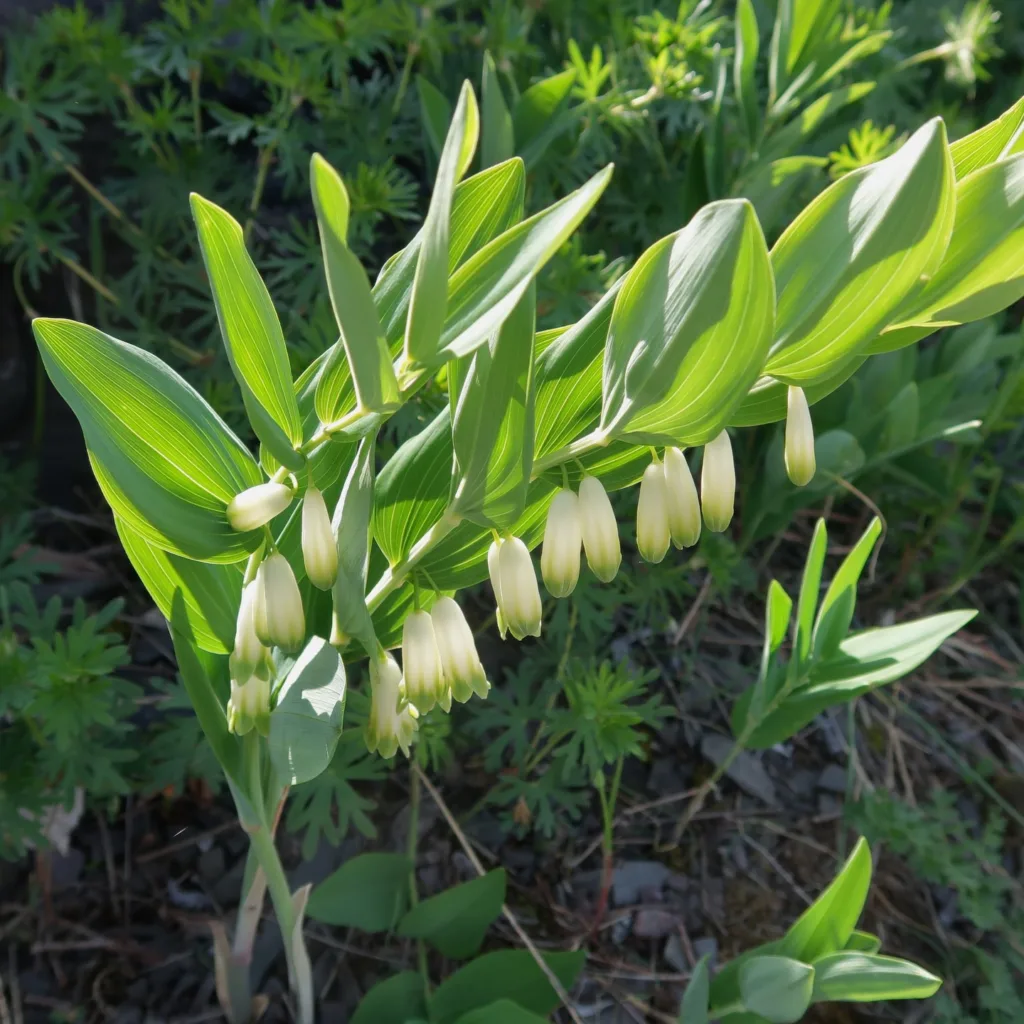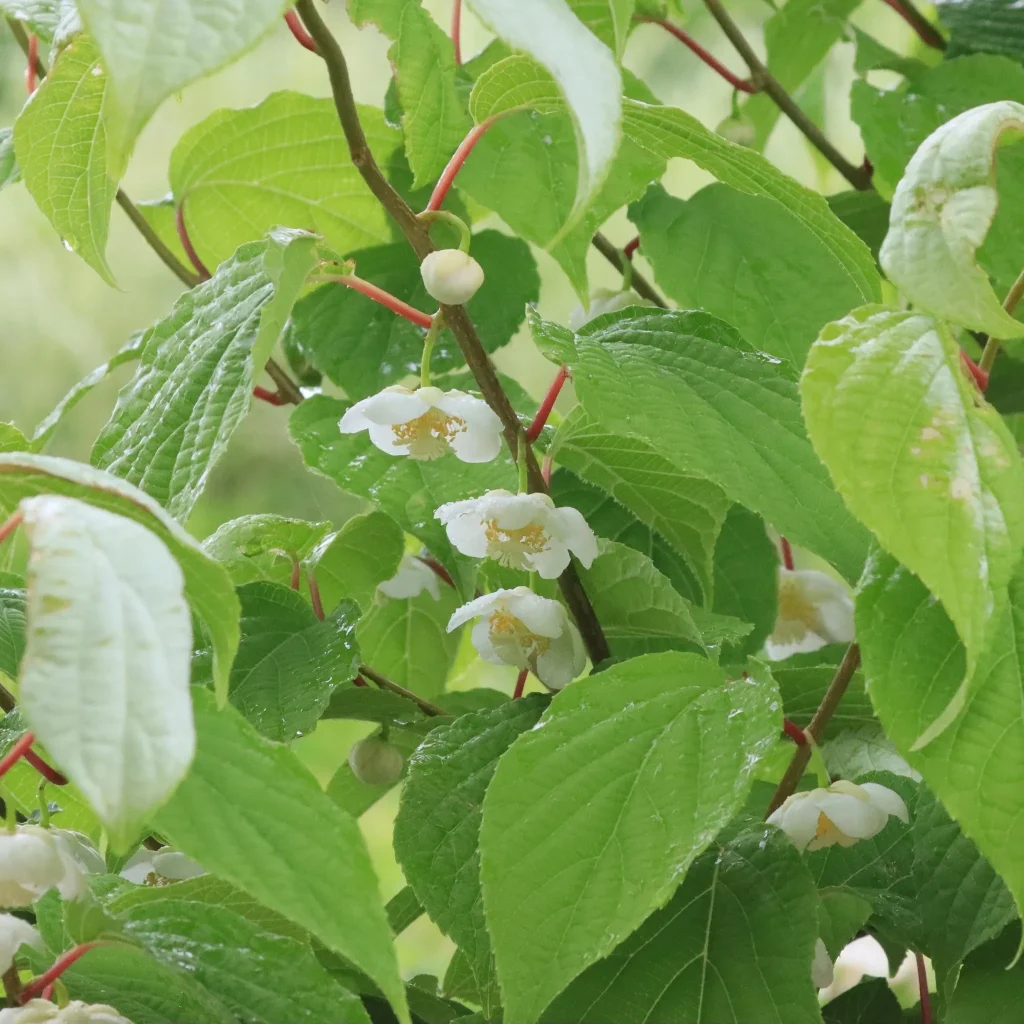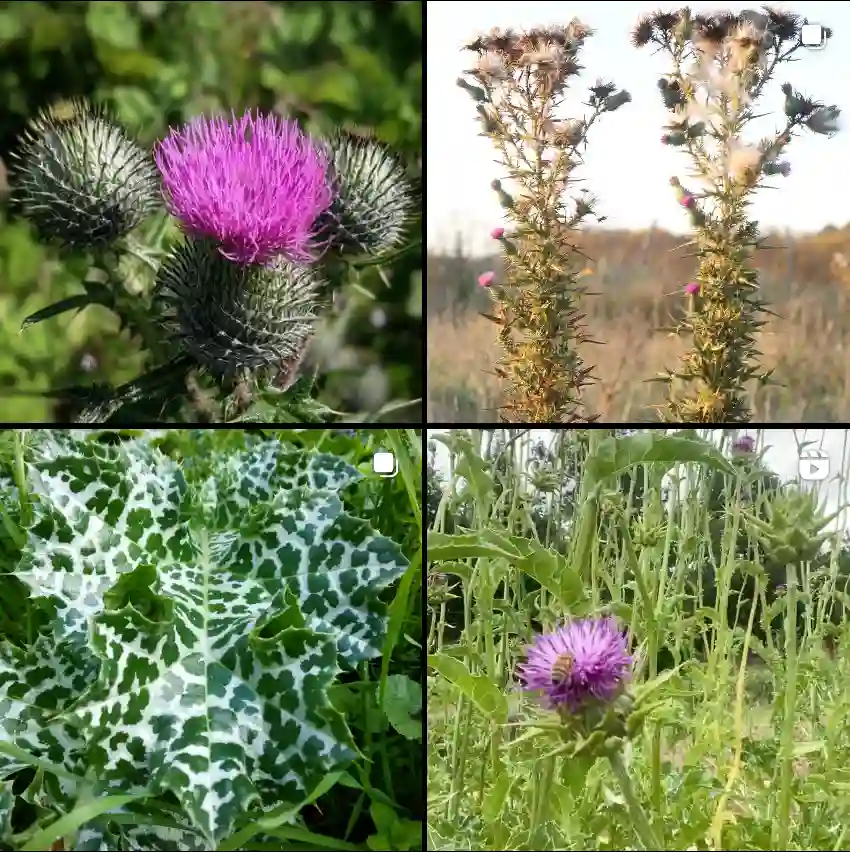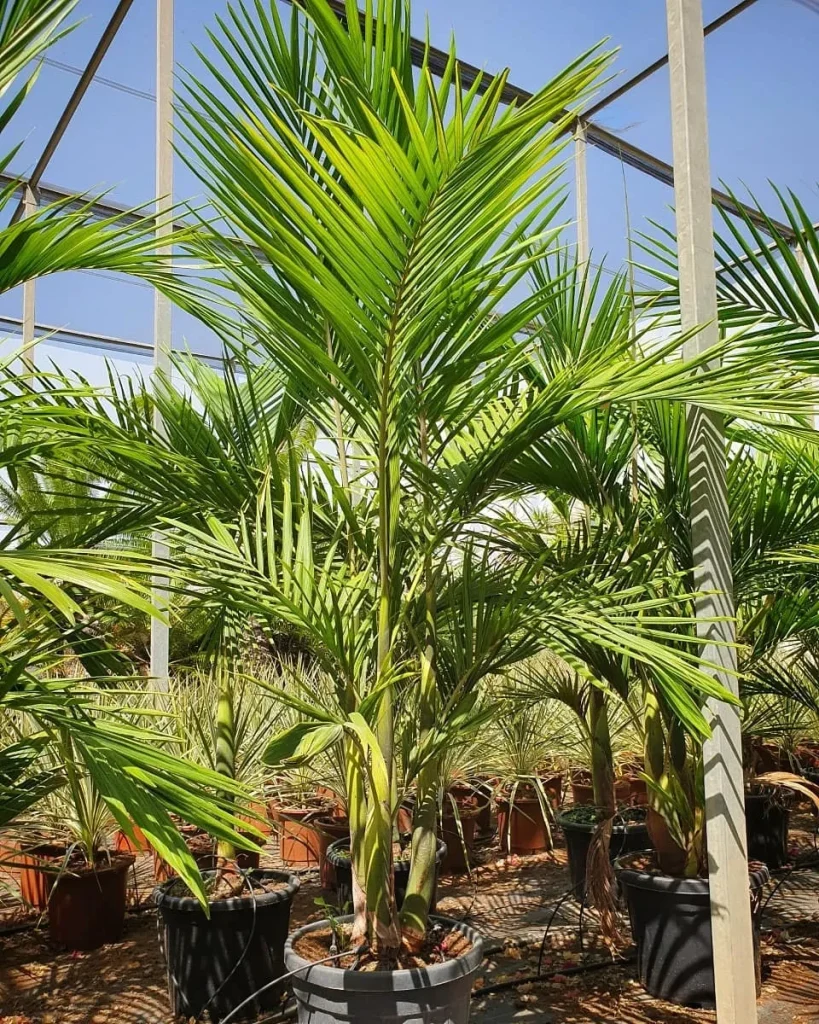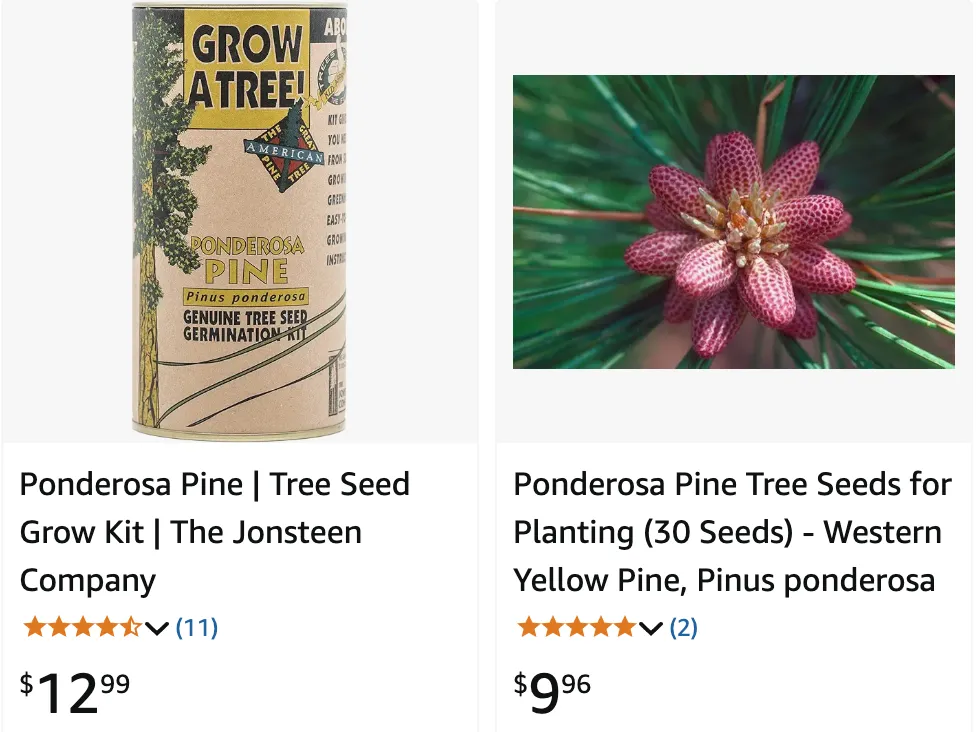
139 Species in Genus Pinus
What is Pinus ponderosa?
Pinus ponderosa, commonly known as the ponderosa pine or western yellow pine, is a large coniferous tree native to western North America. It is known for its tall, straight trunks, orange-brown bark with a distinct puzzle-like pattern, and long, fragrant needles grouped in bundles of three. This tree can reach heights of over 200 feet and is often found in mountainous regions and dry forests.
How to care for Pinus ponderosa?
Pinus ponderosa is a hardy, low-maintenance tree that thrives in well-drained soil with plenty of sunlight. It prefers sandy or loamy soil and can tolerate drought once established. Regular watering during the first few years helps young trees establish strong roots. Avoid overwatering, as this can lead to root rot.
How to propagate Pinus ponderosa?
Propagation of Pinus ponderosa is typically done through seeds. Collect mature cones, extract the seeds, and stratify them by placing them in a moist, cold environment (like a refrigerator) for 6-8 weeks. Once stratified, plant the seeds in well-drained soil and keep them moist until germination occurs. Seedlings can be transplanted to their permanent location once they are strong enough.
Can you grow Pinus ponderosa indoors?
No, Pinus ponderosa is not suitable for indoor growth. Its large size, extensive root system, and need for full sun make it better suited for outdoor landscapes or reforestation projects.
Is Pinus ponderosa toxic?
Yes, parts of the Pinus ponderosa tree, particularly the needles, are toxic to livestock, especially cattle. The needles contain compounds that can cause reproductive issues and, in some cases, poisoning if ingested in large quantities.
What are the benefits of Pinus ponderosa?
Pinus ponderosa offers numerous ecological and economic benefits. It provides habitat for wildlife, prevents soil erosion, and contributes to carbon sequestration. Its wood is widely used in construction, furniture making, and paper production. The tree is also valued for its aesthetic appeal in landscapes and as a windbreak.
What are common problems with Pinus ponderosa?
Common problems affecting Pinus ponderosa include pests like pine beetles and diseases such as needle blight or root rot. Environmental stressors like drought, poor drainage, and pollution can also weaken the tree. Regular monitoring and proper care can help mitigate these issues.
What to plant with Pinus ponderosa?
Pinus ponderosa pairs well with drought-tolerant, sun-loving plants like sagebrush, junipers, and native grasses. Understory shrubs such as serviceberry, chokecherry, or snowberry can complement its towering presence while supporting local biodiversity.
Pinus ponderosa vs Pitch Pine?
While Pinus ponderosa and pitch pine (Pinus rigida) share similarities as North American native pines, they differ in appearance and habitat. Pinus ponderosa is much taller and has longer needles in bundles of three, whereas pitch pine is shorter, with shorter needles in bundles of three. Pitch pine thrives in nutrient-poor, sandy soils and is more resilient to fire and harsh conditions, while Pinus ponderosa prefers well-drained, drier soils in mountainous areas.
How does Pinus ponderosa compare with other similar pines?
Compared to other pines like Jeffrey pine (Pinus jeffreyi) or lodgepole pine (Pinus contorta), Pinus ponderosa is larger and has more distinctive orange-brown bark. Jeffrey pine is often mistaken for Pinus ponderosa, but its cones emit a butterscotch-like scent, unlike the mild fragrance of Pinus ponderosa. Lodgepole pine, on the other hand, is smaller and has thinner, shorter needles.
Can Pinus ponderosa tolerate cold climates?
Yes, Pinus ponderosa is cold-hardy and can tolerate freezing temperatures. It is adapted to a range of climates, from dry mountain slopes to high-altitude forests.
If you’d like me to refine or expand on any section, let me know!
If i die, water my plants!
